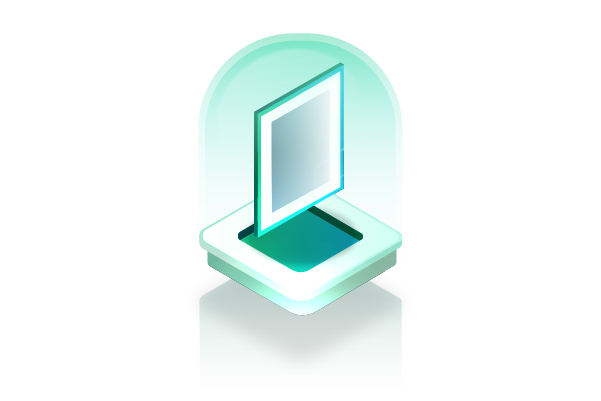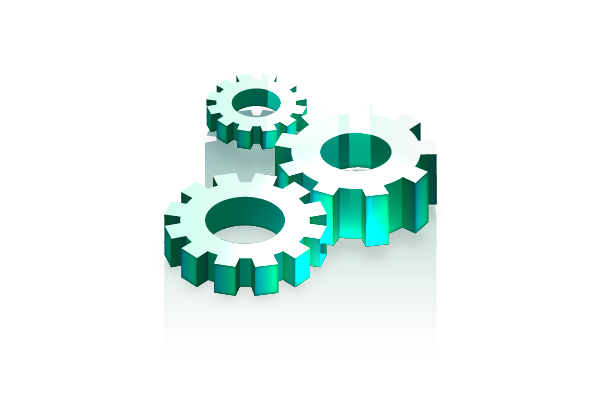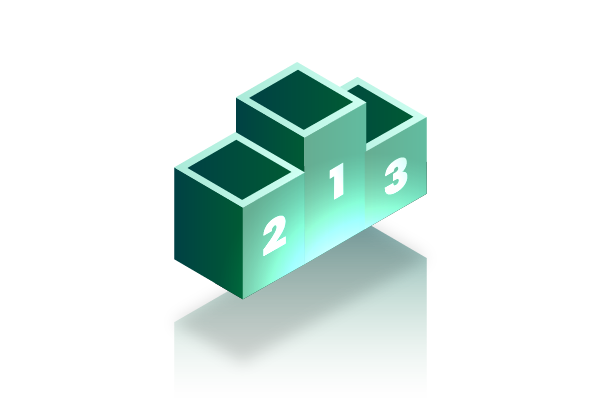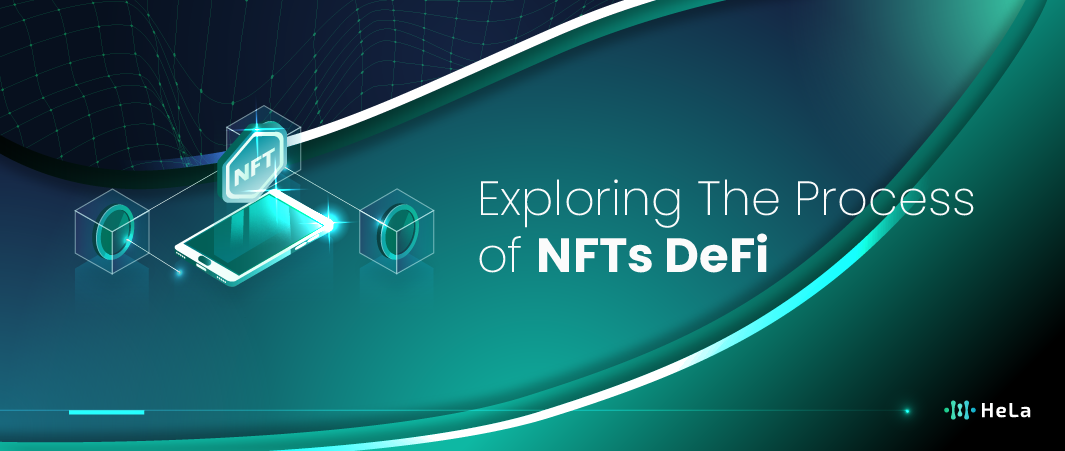NFTs, known for their uniqueness and digital ownership, are now being integrated into DeFi platforms, offering users new ways to generate income, access liquidity, and even own fractions of real-world assets. This combination is creating new financial opportunities and expanding the utility of digital assets far beyond their traditional use cases. If you’re curious about how NFTs are revolutionizing DeFi, this article will guide you through the key concepts and practical examples.
In this article, we explore how NFTs in DeFi work, diving into the benefits they offer, such as increased liquidity, passive income opportunities, and enhanced security. We’ll also highlight three of the best NFT DeFi applications—Aavegotchi, Rarible, and NFTfi—that are pioneering this space with innovative solutions. Whether you are new to the world of NFTs and DeFi or looking to deepen your understanding, this exploration will provide valuable insights into how these technologies are reshaping the future of finance.
What is NFTs DeFi?

Defi (Decentralized Finance) and NFTs (Non-Fungible Tokens) are both relatively new technologies that are quickly gaining popularity within the blockchain space, and the synergy of the two is promising. NFTs are cryptographic tokens that live programmatically on a block chain so that NFTs represent real-world objects like art or collectibles. On the other hand, DeFi stands for “decentralized finance” where financial services are provided through blockchain technology without the participation of conventional financial institutions such as banks. The combination of these two opens up a space where new financial applications are not only innovative but are also even less centralized than before in the traditional finance systems.
When it comes to decentralized finance, NFTs can be employed as collateral for lending or as proofs of ownership of tangible or virtual objects. For instance, when you want to borrow cash, you will use an NFT linked to a painting or virtual real estate. This offers a new paradigm in the DeFi space since previously frozen assets can now be introduced to other markets. This offers NFT owners an opportunity to unlock value from their assets without having to dispose of them on the market.
Moreover, passive income is also possible through NFTs in DeFi. Some hosts allow users to lock up their NFTs to receive passive income or interest on the units. This transforms NFTs from mere crypto-currency tokens into working capital. For example, a user can receive extra tokens if they delegate their NFT on a particular network, which brings more usability to the token.
However, there are also some concerns regarding the new opportunities, like passive liquidity and fluctuating pricing for NFTs. Nevertheless, NFTs remain a relatively new concept, and their connection to DeFi could benefit from more focused rules and further development. However, these innovations still have the potential to make the financial environment more open and diverse and make digital assets a much more significant part of the economy.
How Do NFTs DeFi Work?

NFTs in DeFi work by merging the unique properties of NFTs with the decentralized finance ecosystem, enabling innovative financial applications and services. At its core, an NFT is a one of a kind digital asset verified on the blockchain, and in DeFi, this uniqueness can be leveraged in various ways. For instance, an NFT representing a digital art piece or a virtual land can be used as collateral to secure a loan. The decentralized nature of DeFi means that this entire process happens without traditional financial intermediaries like banks. Instead, smart contracts, which are self-executing contracts coded on the blockchain, automatically manage the terms and conditions of these loans.
One key way NFTs are utilized in DeFi is through staking and yield farming. NFT holders can stake their NFTs on specific DeFi platforms in exchange for earning rewards, such as additional tokens. Yield farming, a popular DeFi activity, also comes into play here, where NFTs can unlock certain farming pools or boost yield rates. By integrating NFTs with these activities, users can generate passive income from their digital assets without selling them. This extends the value of NFTs beyond being simple collectibles and turns them into financial tools within the DeFi ecosystem.
Also Read: Fractionalized NFTs: The Benefits and Risks
Tokenizing physical assets via NFTs is another innovative use case in DeFi. This process involves representing real-world assets, like real estate or luxury items, as NFTs on the blockchain. Once tokenized, these assets can be fractionalized, meaning they can be divided into smaller parts, allowing multiple investors to own fractions of a high-value item. DeFi platforms then enable trading, lending, or borrowing against these tokenized assets, opening up access to a broader range of investors. By bridging the gap between digital and real-world assets, NFTs in DeFi create a more versatile and accessible financial market.
Despite the potential, the integration of NFTs into DeFi is still evolving. There are challenges such as the volatility of NFT prices and the liquidity of NFT-backed loans, which can impact the stability of this ecosystem. Additionally, as these technologies are relatively new, security and regulatory frameworks are still developing. However, with ongoing innovation and adoption, NFTs in DeFi hold the promise of reshaping the financial landscape by allowing users to unlock more value from their digital and real-world assets in decentralized and creative ways.
3 Best NFTs DeFi to Know in 2024

As the worlds of NFTs and DeFi continue to converge, new projects are emerging that push the boundaries of what’s possible in decentralized finance. These innovations are not only changing the way digital assets are used but also creating new opportunities for users to earn and participate in the growing blockchain ecosystem. Below are three of the best NFT DeFi projects that stand out for their unique approaches, combining NFTs and DeFi to offer users various ways to profit from their digital assets:
1. Aavegotchi
Aavegotchi is an Ethereum DeFi product that combines decentralized finance, non-fungible tokens, gaming, and staking. In Aavegotchi, each Aavegotchi is a single NFT like a digital character in the form of a ghost that players can acquire and level up. Every Aavegotchi has different traits, attachments, and abilities depending on which specific ERC-20 tokens it is staked.
Tokens are stakable to increase the value of Aavegotchi, and players can participate in mini-games and community events. Another aspect of the project is that Aavegotchi combines the excitement of an NFT game with earning through DeFi, which will be interesting for users interested in both approaches.
2. Rarible
Rarible is a decentralized marketplace that has no restrictions on different possibilities, and users can freely generate, sell, and purchase NFTs. Still, Rarible also has its token, RARI, in the DeFi sphere, which gives its community members voting rights regarding some important changes in the platform.
RARI can be obtained through various activities within the platform, including NFT activities. These tokens can also be staked to get more profits, adding a DeFi layer to Rarible. In this sense, Rarible is not just an NFT market but also employs DeFi rewards to encourage users and decentralization.
3. NFTfi
NFTfi is an abbreviation of non-fungible token finance that makes it possible for one to borrow money using the NFTs as security. Instead of selling the NFTs, the user can also use them as security to get loans which will be in the form of cryptocurrency. This helps bring liquidity to NFTs without having to sell the actual digital asset, making it perfect for those interested in owning unique pieces of art, music, videos, and more without compromising on the value of the NFTs in question.
This allows borrowers to take loans based on their NFTs’ value, while lenders can accept loan offers they consider to have the desired risk level. In case the borrower is unable to pay back the loan, the NFT is seized by the lender as agreed. The concept of NFTfi described above is an excellent example of how DeFi and NFTs can be used together to offer more liberal and decentralized approaches to funding.
The Benefit of NFTs DeFi
NFTs in DeFi offer several benefits that combine the unique features of NFTs with the advantages of decentralized finance, creating new financial opportunities and enhancing the utility of digital assets. Here are some key benefits of NFTs in DeFi:
Increased Liquidity for Digital Assets
One of the most substantial advantages of merging NFTs with DeFi is the ability to unlock liquidity for assets that are traditionally considered illiquid. NFTs typically represent unique, indivisible items such as digital art or collectibles, which can make them challenging to trade or convert into cash quickly.
However, within the DeFi framework, NFT owners have the opportunity to utilize their NFTs as collateral for securing loans or to fractionalize their NFTs into smaller, more tradable units. This capability provides users with access to liquidity without the need to sell their NFTs outright, thereby enhancing the versatility and overall value of their digital assets.
Enhanced Utility and Passive Income Opportunities
The incorporation of NFTs into the DeFi environment brings a level of functionality that is not common in typical NFT use. For example, holders of NFTs can stake such tokens in DeFi platforms where the tokens can earn rewards or interests over time.
This turns NFTs into income-generating assets rather than mere investments or digital art. Such functionality not only enhances the value of NFTs, but also enables its owners to be actively involved in the operation of DEFI system, earning passive income from their assets, as well as making a profit out of their NFTs in a way which was not available before.
Ownership and Access to Real-World Assets
NFTs within the DeFi space also enable real-world assets such as properties, luxury assets, and other valuable assets like art and collectibles through the use of tokenization. By tokenizing these significant tangible assets, DeFi platforms facilitate long-term ownership and trading of high-value assets by various categories of investors.
Also Read: 12 Best Defi Marketing Agencies to Watch this 2024
This process makes investment opportunities easily accessible since users can invest in properties or items that may be expensive or challenging to purchase in real life. Tokenization thus reveals new opportunities for investment and a financial stake.
Increased Security and Transparency
As mentioned earlier, both NFTs and DeFi utilize blockchain technology, and it is essential to understand that blockchain is all about decentralization and transparency, and its basic functionality is characterized by transparency, which also means that all the transactions made within the context of both NFTs and DeFi are recorded within the blockchain. This inherent transparency increases security greatly since everything that takes place—ownership transfer and every transaction—is registered on the blockchain.
In addition, smart contracts within the DeFi environment also self-executed the basic process of lending and borrowing and only requiring little third-party involvement which reduces the chances of errors. The combining of NFTs with DeFi hence helps create a more secure and efficient financial environment, which benefits more people.
Conclusion
NFTs, known for their unique, non-fungible nature, are gaining new layers of utility when integrated into DeFi ecosystems, allowing for greater liquidity, income generation, and even ownership of real-world assets. This fusion not only enhances the value of NFTs but also expands the boundaries of decentralized finance, offering new opportunities for users to engage with digital and physical assets in ways that were previously unimaginable.
In summary, the synergy between NFTs and DeFi represents a groundbreaking shift in the financial landscape. By examining innovative projects like Aavegotchi, Rarible, and NFTfi, we see how NFTs are being used in DeFi to unlock liquidity, create passive income, and provide new forms of asset ownership. As these technologies continue to evolve, they are poised to reshape how we interact with both the digital and real worlds. Whether you’re a creator, investor, or enthusiast, understanding NFTs in DeFi is key to staying ahead in the rapidly advancing blockchain space.
Disclaimer: The information provided by HeLa Labs in this article is intended for general informational purposes and does not reflect the company’s opinion. It is not intended as investment advice or a recommendation. Readers are strongly advised to conduct their own thorough research and consult with a qualified financial advisor before making any financial decisions.

